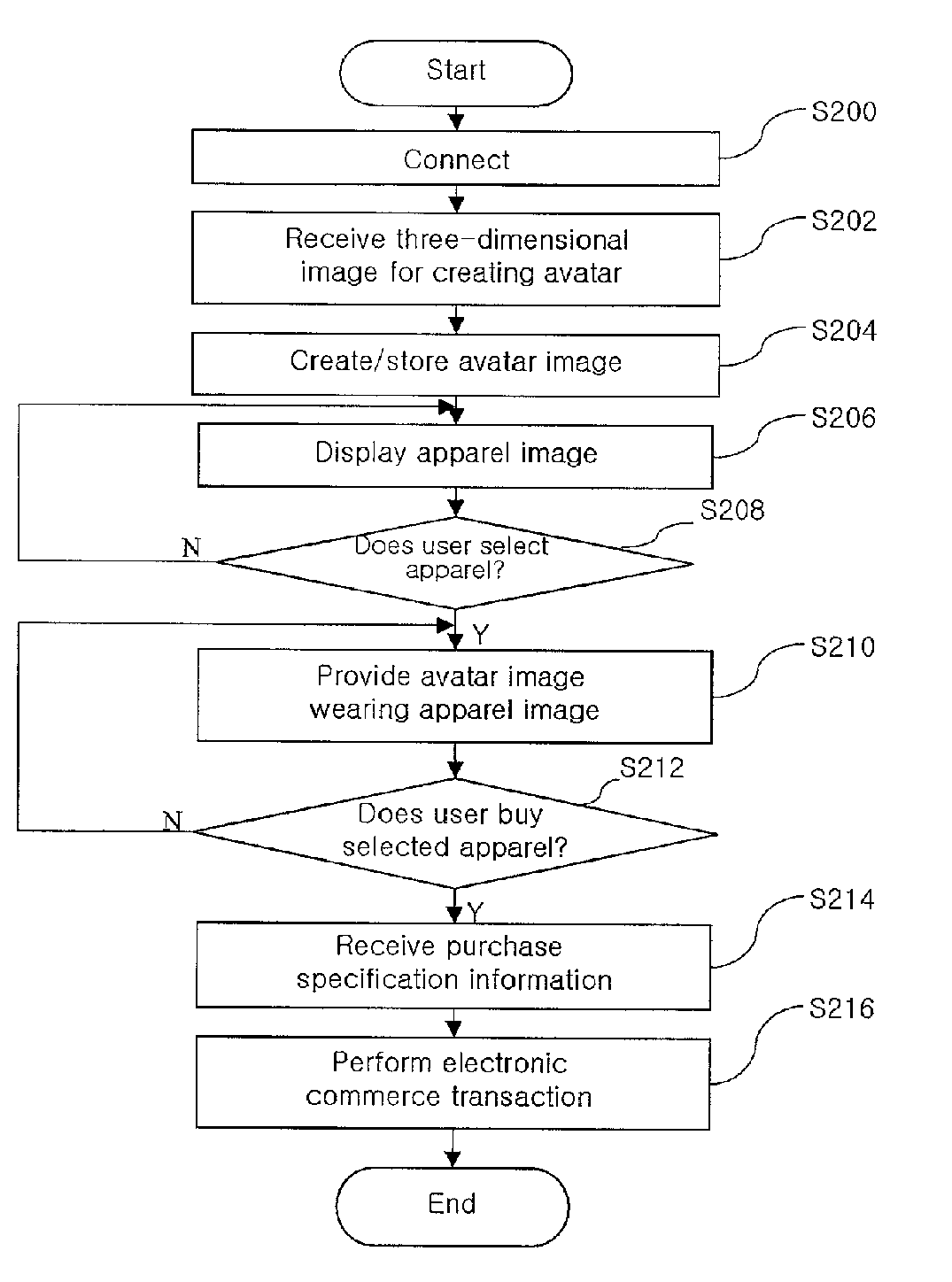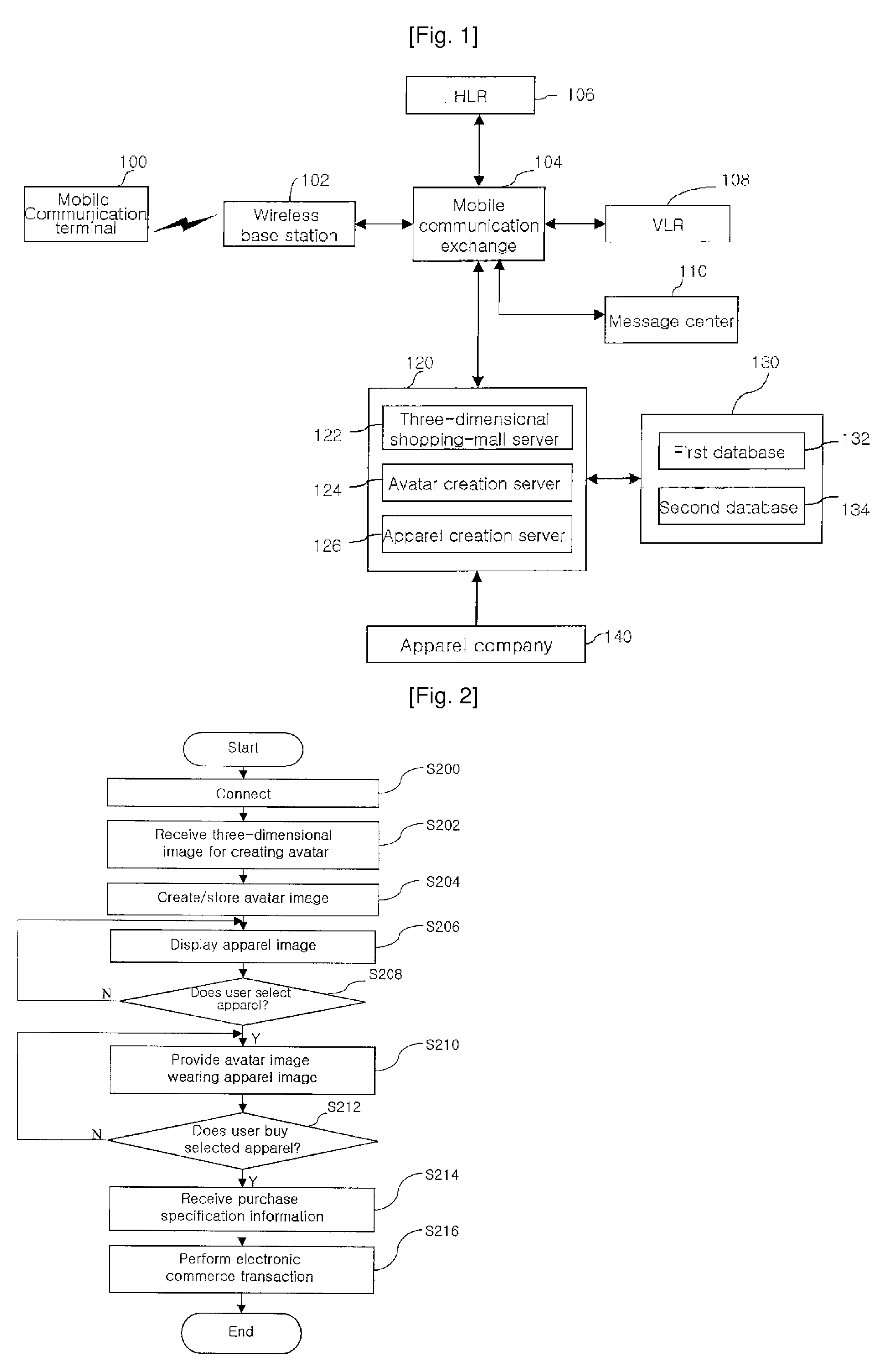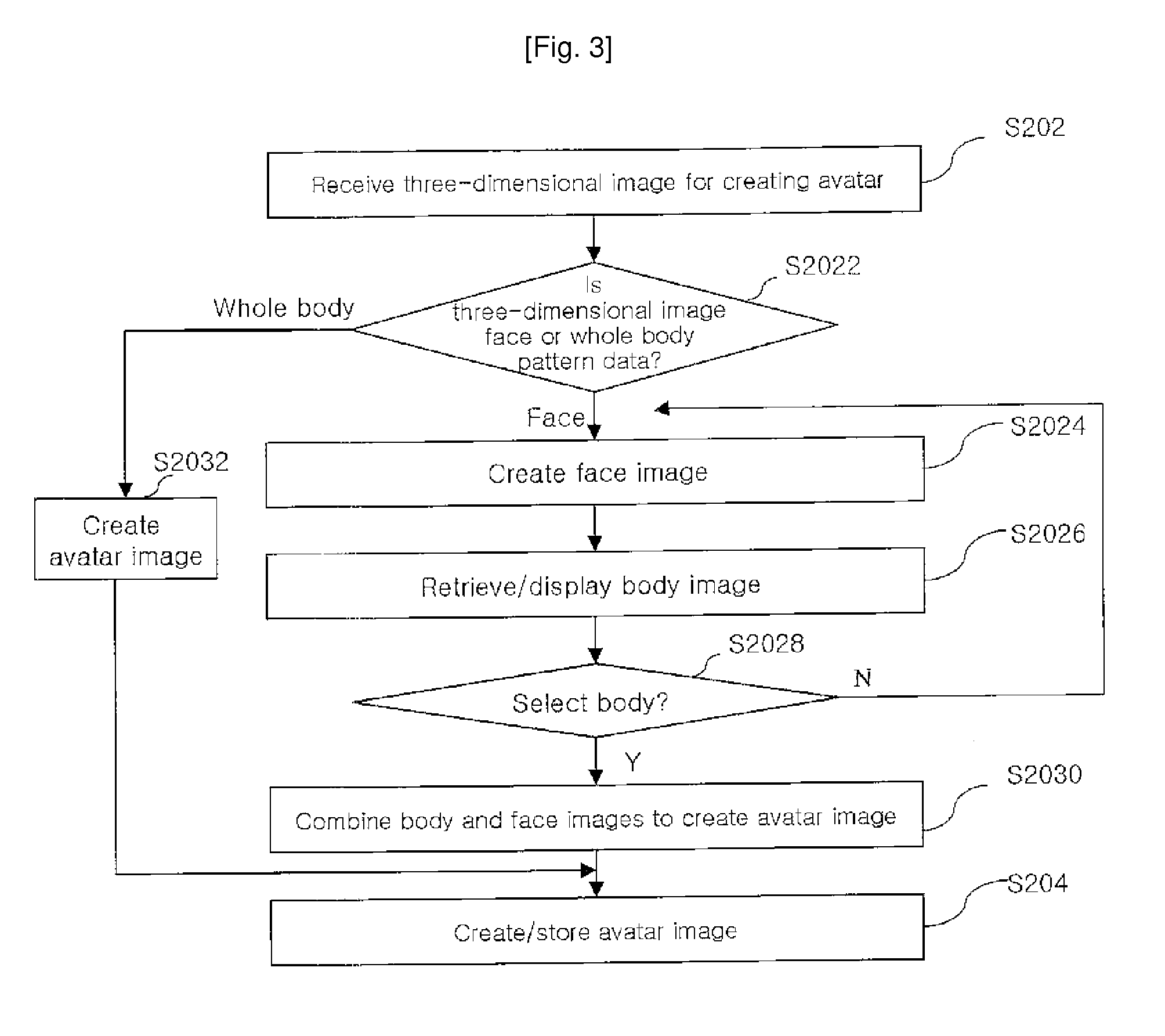Electronic Commerce System for the Digital Fashion Using an Avatar Based on a User and Method for Operating the Same
- Summary
- Abstract
- Description
- Claims
- Application Information
AI Technical Summary
Benefits of technology
Problems solved by technology
Method used
Image
Examples
Embodiment Construction
[0020]Hereinafter, a preferred embodiment of the present invention will be described in detail with reference to the accompanying drawings.
[0021]FIG. 1 is a block diagram illustrating a digital fashion electronic commerce system, i.e. a shopping-mall system utilizing user-based avatar images according to a preferred embodiment of the present invention.
[0022]Referring to FIG. 1, the three-dimensional (3D) shopping system utilizing user-based avatar images according to a preferred embodiment of the present invention comprises a mobile communication terminal 100, a wireless base station 102, a mobile communication exchange 104, a home location register (HLR) 106, a visitor location register (VLR) 108, a message center 110, a server unit 120, a database unit 130, and an apparel company 140. The server unit 120 comprises a 3D shopping-mall server 122, an avatar creation server 124, and an apparel creation server 126, and the database unit 130 comprises first and second databases 132 and ...
PUM
 Login to View More
Login to View More Abstract
Description
Claims
Application Information
 Login to View More
Login to View More - R&D
- Intellectual Property
- Life Sciences
- Materials
- Tech Scout
- Unparalleled Data Quality
- Higher Quality Content
- 60% Fewer Hallucinations
Browse by: Latest US Patents, China's latest patents, Technical Efficacy Thesaurus, Application Domain, Technology Topic, Popular Technical Reports.
© 2025 PatSnap. All rights reserved.Legal|Privacy policy|Modern Slavery Act Transparency Statement|Sitemap|About US| Contact US: help@patsnap.com



